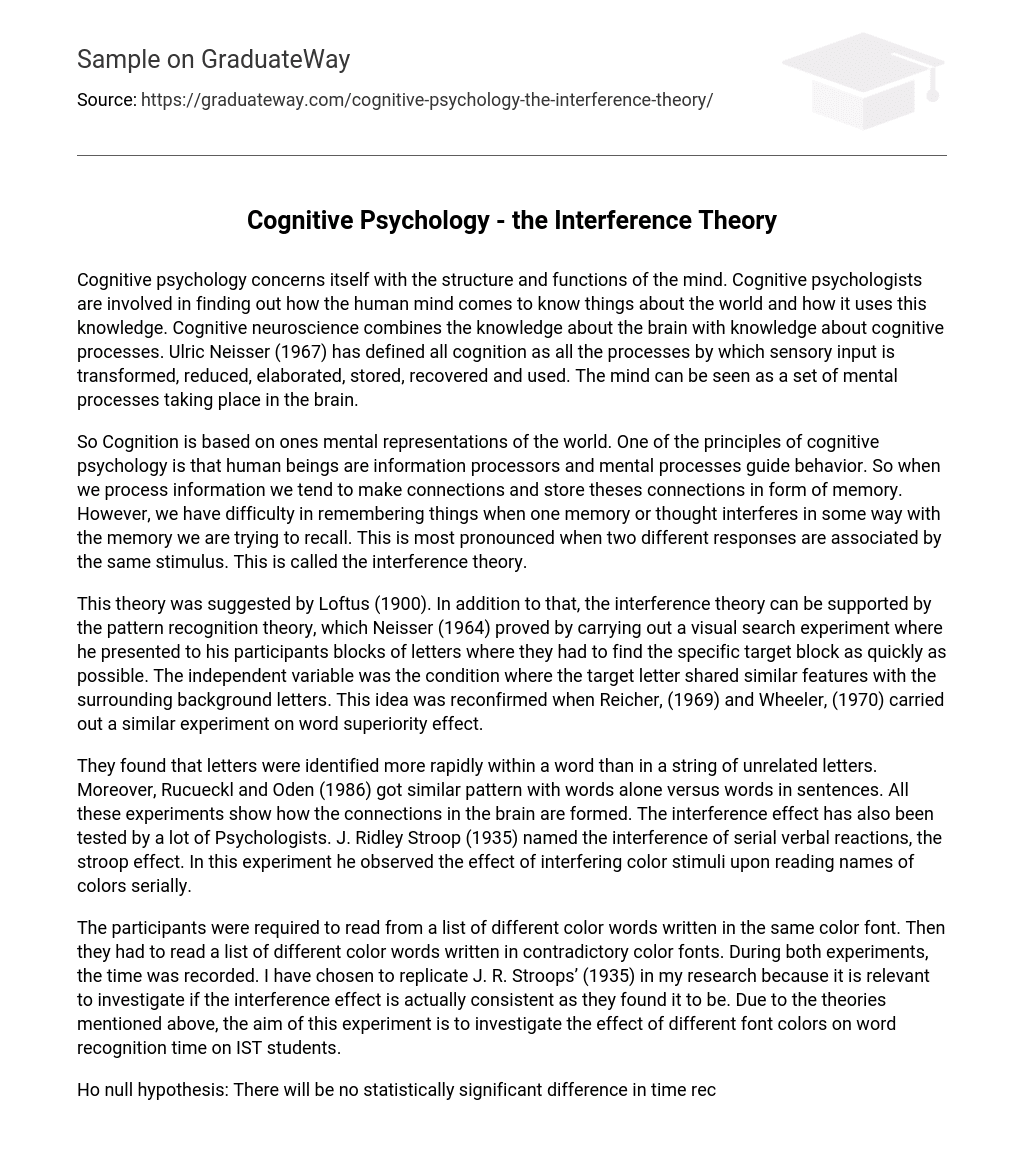Cognitive psychology and cognitive neuroscience study the mind and its processes. Cognitive psychology aims to understand how the mind learns about and utilizes information, while cognitive neuroscience combines knowledge about the brain with cognitive processes. According to Ulric Neisser (1967), cognition involves activities like modifying, simplifying, expanding, retaining, retrieving, and using sensory input. The mind is considered as a set of mental processes that occur within the brain.
Cognitive psychology states that cognition is dependent on an individual’s mental representations of the world, highlighting humans as information processors whose behavior is shaped by mental processes. In the process of information processing, connections are formed and stored in memory. However, the recall of a specific memory can become difficult when it is disrupted by another memory or thought. This interference becomes evident when two distinct responses are associated with the same stimulus, known as interference theory.
This theory was suggested by Loftus (1900). The interference theory can be supported by the pattern recognition theory, as proven by Neisser (1964) in a visual search experiment. He presented participants with blocks of letters and asked them to find a specific target block quickly. The condition with similar features between the target letter and surrounding background letters was the independent variable. Reicher (1969) and Wheeler (1970) further confirmed this idea through a similar experiment on the word superiority effect.
Multiple experiments have shown that letters are recognized faster when they are in a word compared to when presented alone. Similarly, Rucueckl and Oden (1986) discovered similar findings in their comparison of words alone versus words within sentences. These experiments offer valuable insights into the neural connections formed in the brain. The interference effect, extensively studied by psychologists, is referred to as the Stroop effect by J. Ridley Stroop (1935). In his experiment, he observed how color stimuli caused interference when reading color names sequentially.
The participants were told to read words in different colors but with the same font, and then read words in colors that contradicted the word’s actual meaning. The researchers recorded the time it took for participants to finish both experiments. I chose to replicate J.R. Stroop’s 1935 study in my own research because it is important to see if the interference effect is consistently observed, as Stroop found it to be. Based on earlier theories mentioned, this experiment aims to investigate how various font colors affect word recognition time among IST students.
The null hypothesis posits that there will be no significant disparity in time recognition for font colors, while the research hypothesis proposes that recognition time will noticeably rise when a color word is written in an incongruous color compared to when it is written in a congruent color.
The following is a bibliography:
Below are some helpful links about pattern recognition:
http://library.thinkquest.org/C0110291/science/forget/interference
http://lamar.colostate.edu/~bclegg/PY453/pattern_recognition.pdf
http://www.alleydog.com/cognotes/patrecog.html





